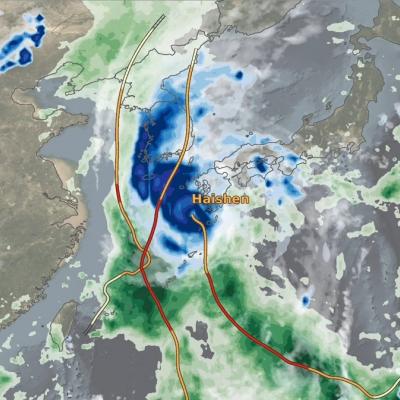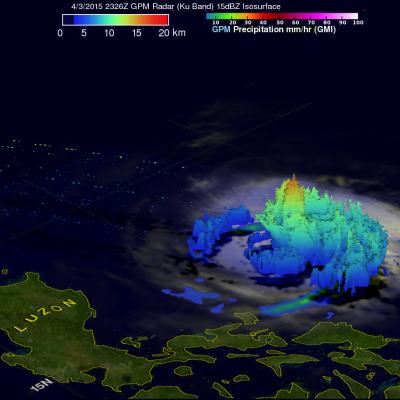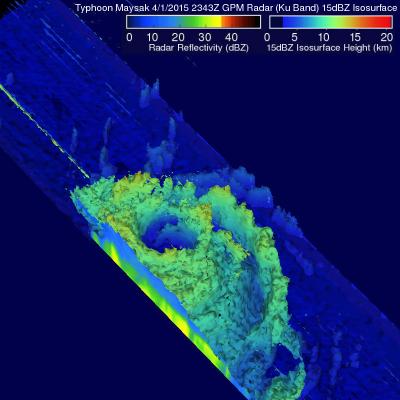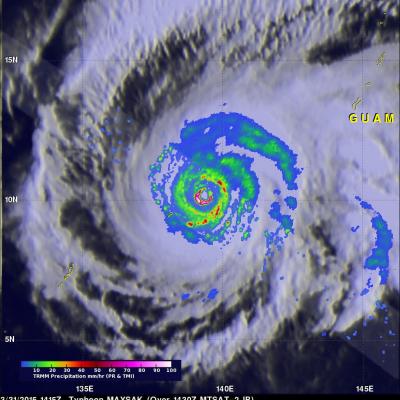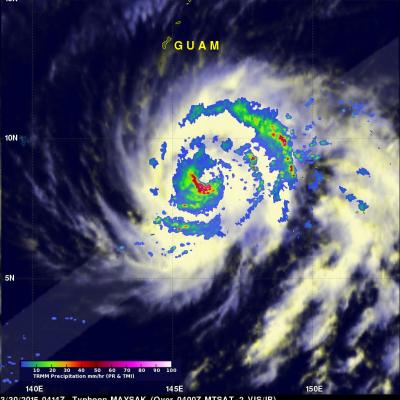GPM Saw Deadly Maysak Approaching The Philippines
Typhoon Maysak caused the reported deaths five people in the Federated States of Micronesia and as a tropical storm killed seven others when it hit the the north-eastern Philippines. The GPM core observatory satellite passed above dissipating typhoon Maysak when it was approaching the Philippines on April 3, 2015 at 2326 UTC. An analysis of rainfall from GPM's Microwave Imager (GMI) showed that Maysak was dropping rain at a rate of over 69 mm (2.7 inches) per hour. Vertical wind shear was causing typhoon Maysak to weaken as it moved toward the Philippines but data from GPM's Dual-Frequency


